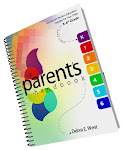Hands-On Activities for Teaching Geometry
According to an article from http://www.ehow.com/, geometry concepts can be difficult for younger students to grasp due to their abstract nature. Teachers can assist students in visualizing these abstract concepts by using manipulatives and hands-on learning experiences in their mathematics instruction. These types of learning experiences allow students to experiment and test geometry concepts learned in class, making the training more meaningful than rote memorization. Parents can share these ideas with their child's teacher or if you feel confident, try activities at home.
Building Nets
Nets are three-dimensional objects used to teach geometric concepts such as area and volume. Nets can also be used to help students understand faces and vertices in prisms. Provide students with templates of nets and help them fold their templates to create different shapes. Common nets are cubes, rectangular prisms, triangular prisms and pentagonal prisms. Have students label the sides and faces of their nets, as well as all the vertices. These nets can be saved and referred back to throughout a unit of study.
Pattern Blocks
Pattern blocks allow students to manipulate shapes to make new geometric shapes. By using pattern blocks to create new shapes, students begin to see relationships between shapes. For example, it takes six equilateral triangle pattern blocks to make a hexagon, and a hexagon has six sides. This learning can then be transferred to fractions as students will then know equilateral triangles are one-sixth of a hexagon. Students can also use pattern blocks to create tessellations to explore symmetry.
Geoboards
Geoboards are an effective means for testing similar and congruent theories. Students can use geoboards to create geometric shapes that are the same size and shape, same shape but different size, same size but not the same shape, and neither the same size or shape. Students create their shapes on the geoboard, then transfer their results to dot paper to share with their classmates.
Surface Area and Volume
Teach students to find volume of cylinders by creating their own paper cylinders. Take a piece of 8 1/2 inch-by-11-inch paper and roll it into a long, tall cylinder. Tape it to hold it together. Take another sheet of the same size paper and roll it into a shorter and wider cylinder. Have students predict which one will hold more cups of beans. Fill the cylinders full of beans, keeping track of the number of cups and discuss the results. Compare the results to students' predictions. Have students measure the surface area of their two cylinders (minus the top and bottom) by measuring a flat sheet of 81/2-inch-by-11-inch paper. Add the surface areas of the tops and bottoms of the cylinders to get the total surface area. Survey the class for connections between surface area and volume.
Read more: Hands-On Activities for Teaching Geometry










0 comments:
Post a Comment